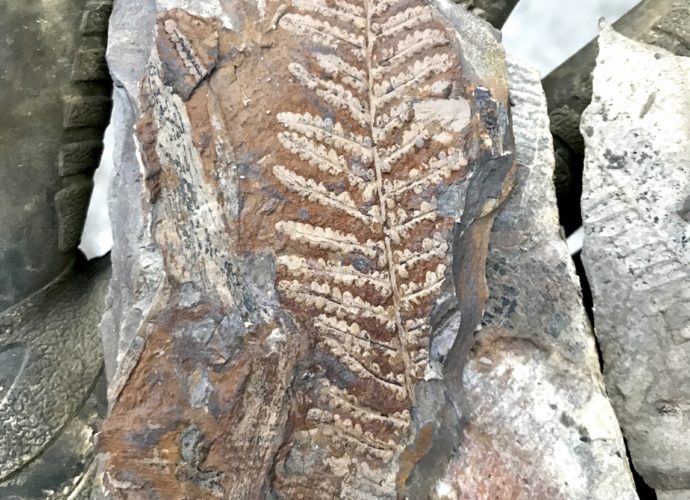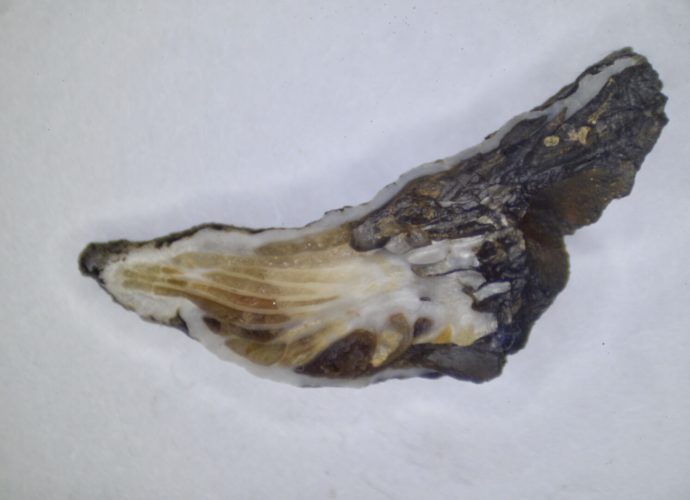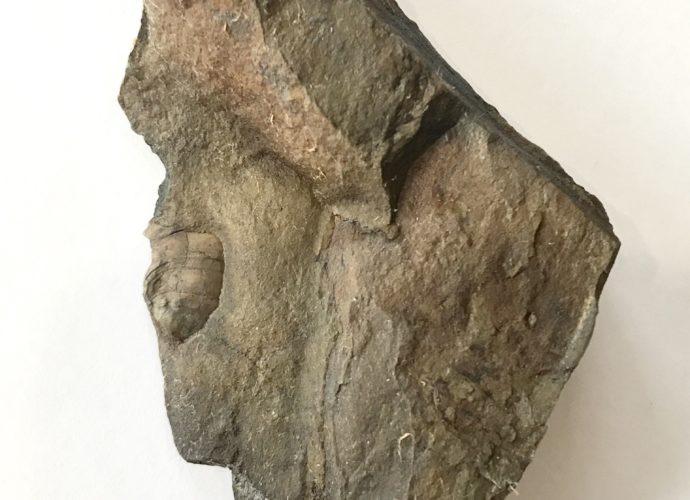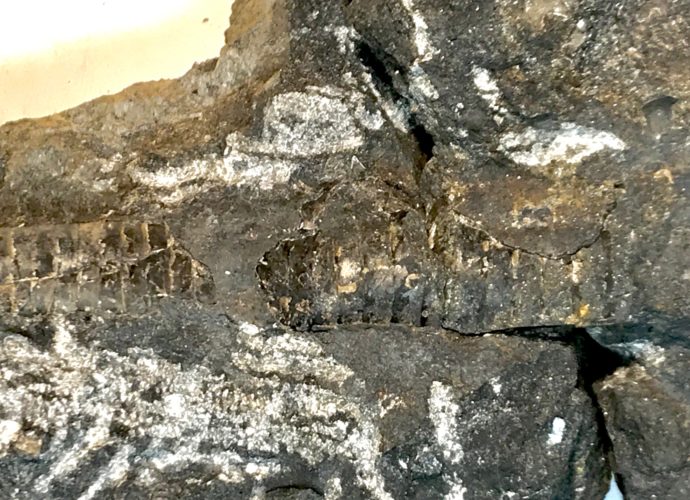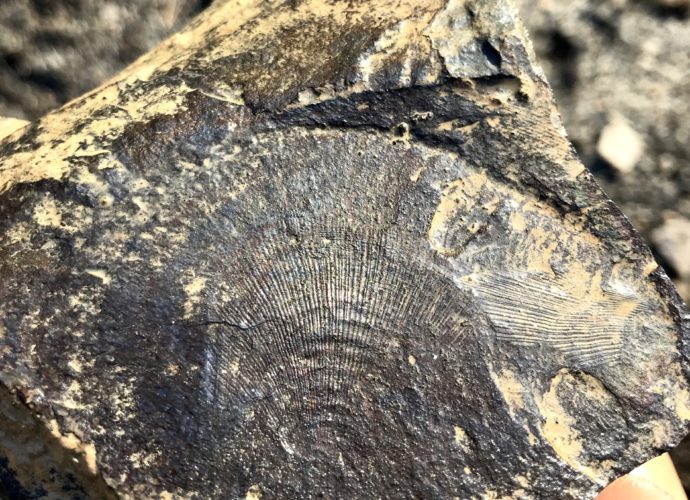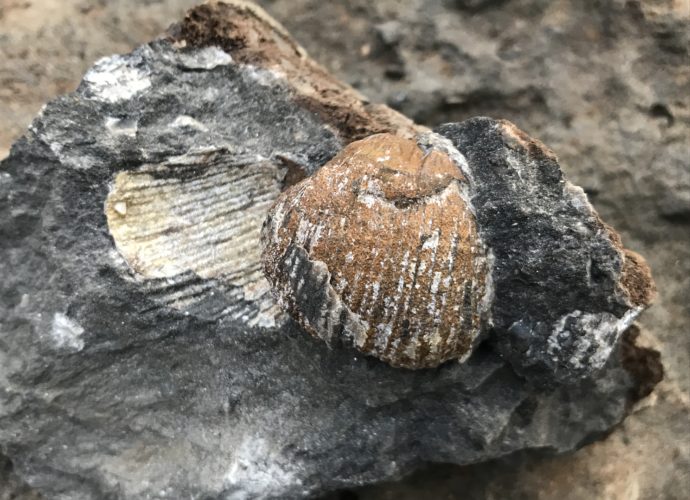Mooreoceras
Maybe Pseudorthoceras, but I’m going to give more weight to Mooreoceras because of the large size of this specimen. The shell is a longicone. Also, the position of the Septal neck is off-center, as shown on the following plate. I found the impression of the larger piece still in theRead More →


